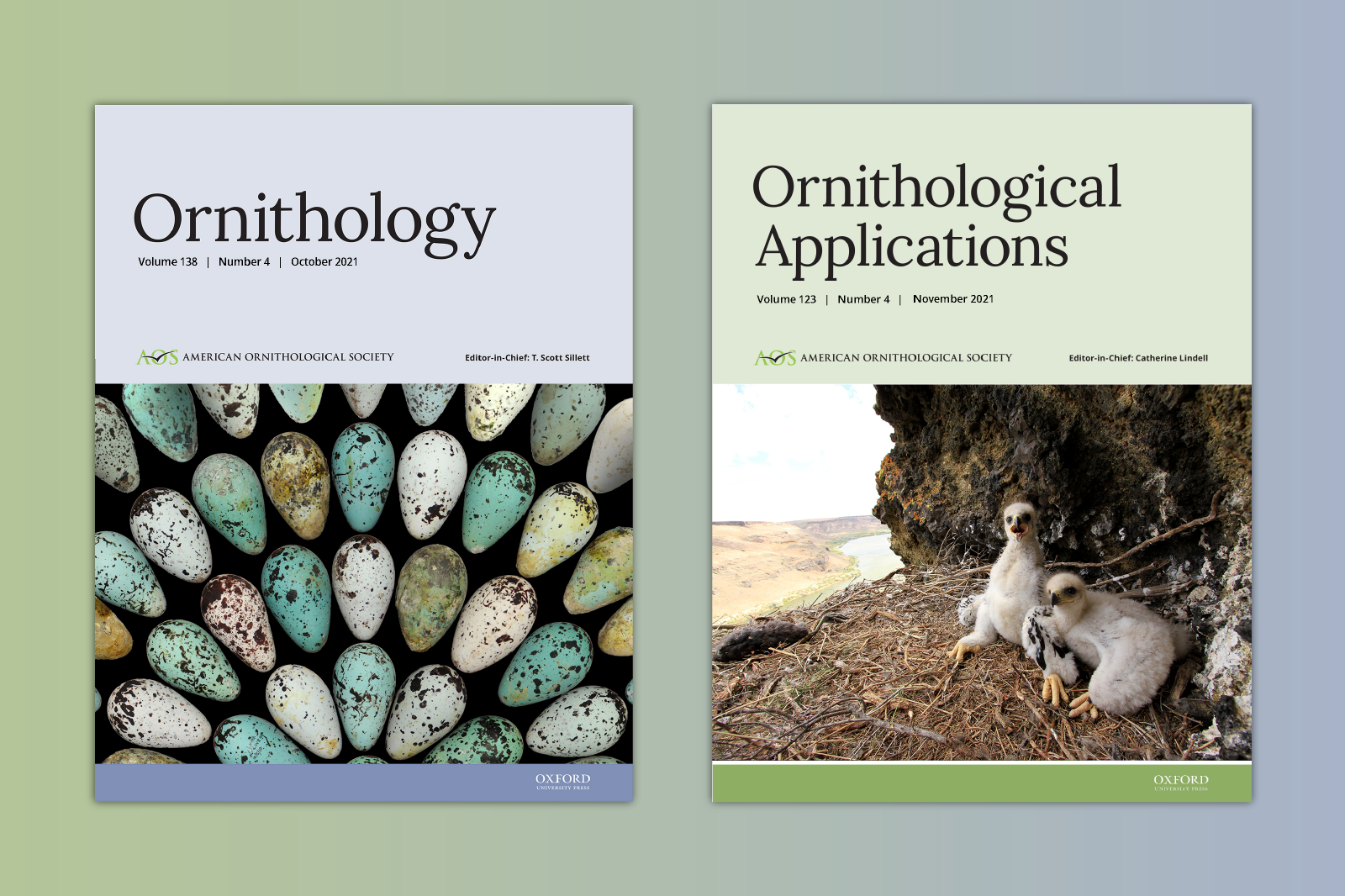The American Ornithological Society (AOS), with the help of our publisher, Oxford University Press, now has the capacity to promote video abstracts to accompany published research. We expect this capacity will improve the reach of our articles and make them more accessible to a wider audience. Authors of accepted manuscripts for new issues of Ornithology and Ornithological Applications are encouraged to consider including a multimedia abstract, i.e., a graphical abstract or video abstract as part of the article, in addition to the text abstract.
Multimedia abstracts are an optional visual summary of the main article findings and often take the form of graphical images or videos. They offer readers a quick browsing method, and provide you with an asset to share and discuss your findings.
Video abstracts offer great benefits, including:
- A new way to explain, expand on, or go deeper into aspects of your research findings.
- Greater flexibility and creativity in how you can present your research.
- Broader distribution and increased visibility for your research.
- An opportunity to illustrate your research methods and demonstrate tools used.
What makes a good multimedia abstract?
An effective multimedia abstract should convey the key question addressed in your research and a summary of the outcomes using universal visual cues and succinct data points. This should not simply be reading your text abstract—it should demonstrate something key to your findings and be a maximum of five minutes long. Consider including the following:
- Summary of outcomes and key data points with units.
- Prose should be consistent with usage in the title and body of the article, but with minimal text.
- Use of color, image, and symbols to help translate your findings visually.
- Author name, journal, and year of publication.
A free primer on producing visual abstracts, including examples, can be found at the scholarly writing resource center, Enago Academy.
General video abstract guidelines
Below, please see some guidelines to help you produce your video abstract.
Suggested Length
3–5 minutes, depending on the complexity of the article.
Presentation/Visual Aids
We don’t have specific standards we want you to follow. Some authors may produce a dynamic video showing field or lab work, along with results, while others may rework a presentation to fit the length guidelines. Some may speak to their screens for 3–5 minutes. Generally, including nice graphics, photos, and short video clips will be a big plus.
Content
Please include:
- The title of your article and a list of the names of yourself and your coauthors
- Still photograph to use as a placeholder on the website for your video
- An informative title that is a brief narrative in itself, i.e. one or two key results of the study
- The take-home messages of the study
- The questions you investigated
- Methodologies
- Results
- Future directions
- Acknowledgements
- Subtitles and/or translations for greater accessibility
- Signed releases for copyrighted media content: music accompaniment, graphics, photos, and videos must be copyright-free or used with permission and attribution. Please review our guidelines for the use of photography on our digital platforms for photos that depict researchers handling birds.
Technical video specifications and submission guidelines
- File type: Videos should be submitted as an .mp4 file-type, at the highest possible resolution. Please also include a still image to represent the video.
- Length: maximum of 5 minutes
- Frame size: 1280 x 720 pixels
- Aspect ratio: 16:9
- File size: maximum 300 MB
- Landscape format
- The file should be clearly named to show it is a multimedia abstract, as opposed to a figure that is part of the article body. The following are examples of good file naming:
- graphical_abstract.tiff
- video_abstract.mp4
- Include a title slide: Video abstract creators are encouraged to take advantage of the AOS title slide, available for download here. Note: If using, please include this at the beginning of your video abstract.
- If supplied alongside the manuscript and cited within the article text, published videos will appear as streamable content within the article body. We cannot use videos hosted on third-party sites such as YouTube, as the link may expire.
See Preparing and Submitting your Manuscript for additional guidance.
Video Uploading Instructions
Video abstracts may be submitted through Editorial Manager at initial submission, at the revision stage, or after final acceptance for publication in either Ornithology or Ornithological Applications. The video abstract will be posted online with your article.
Please see this example of a video abstract from an AOS member for the British Ecological Society journal, People in Nature: Tapping birdwatchers to promote bird-friendly coffee consumption and conserve birds
Many thanks to Sam Hemenway from Oxford University Press for helping us develop these guidelines; we look forward to seeing your video abstracts!
Note: This blog post was updated on 12/21/21 to clarify that video abstract submission are optional.
